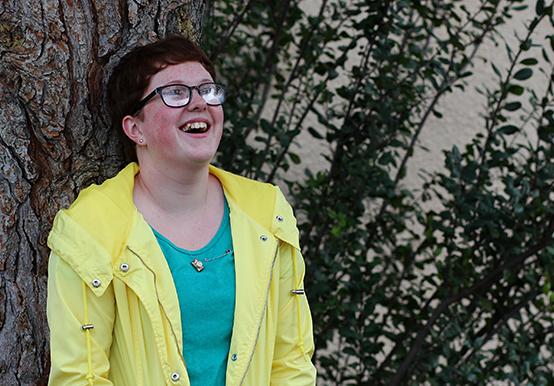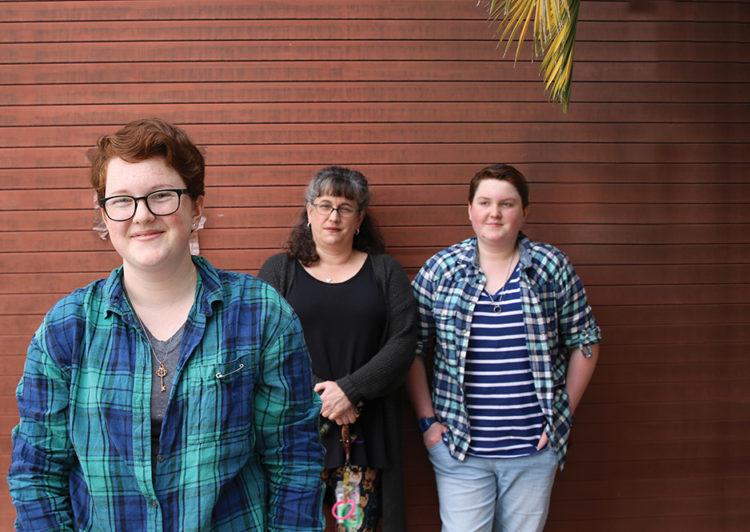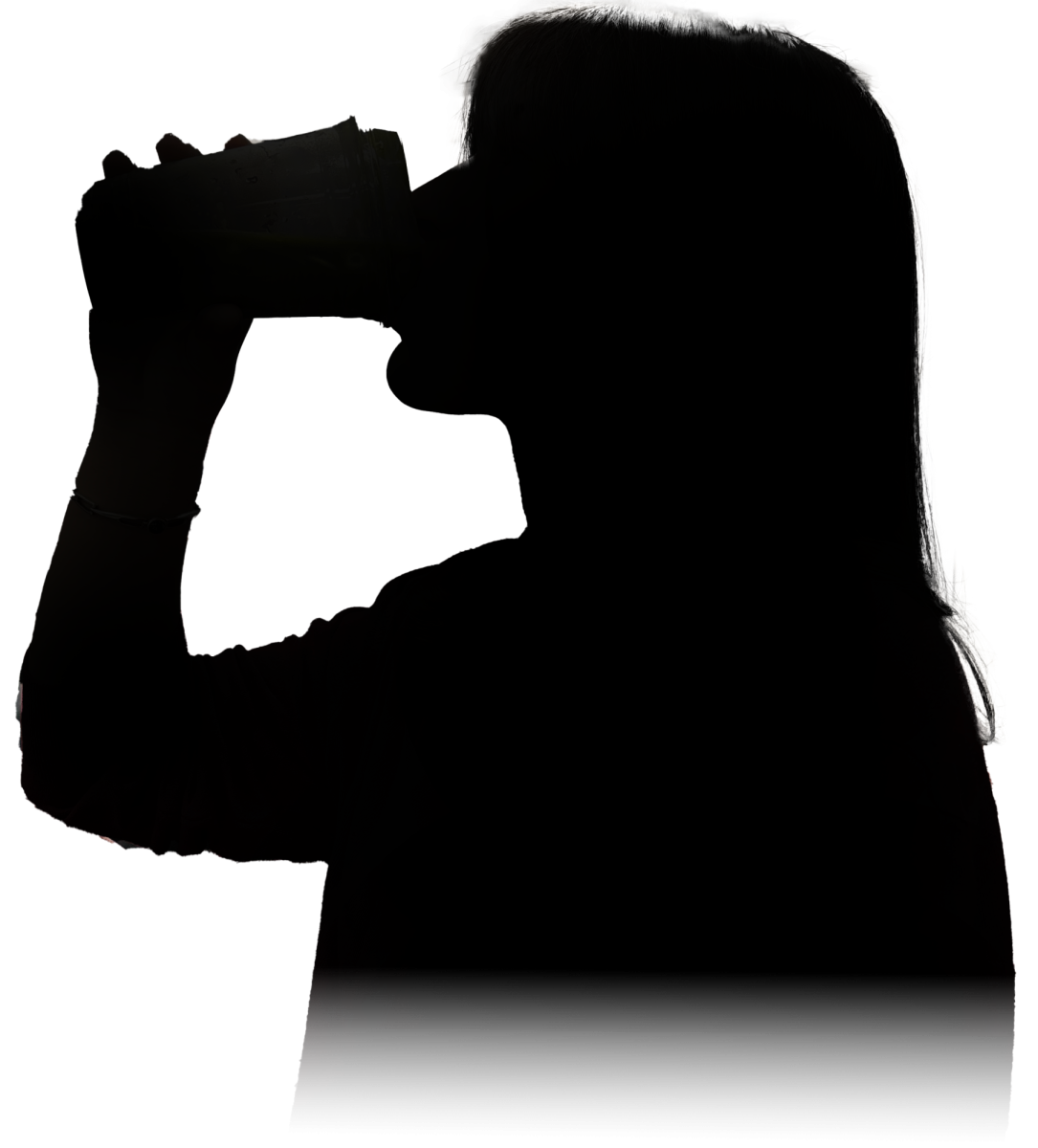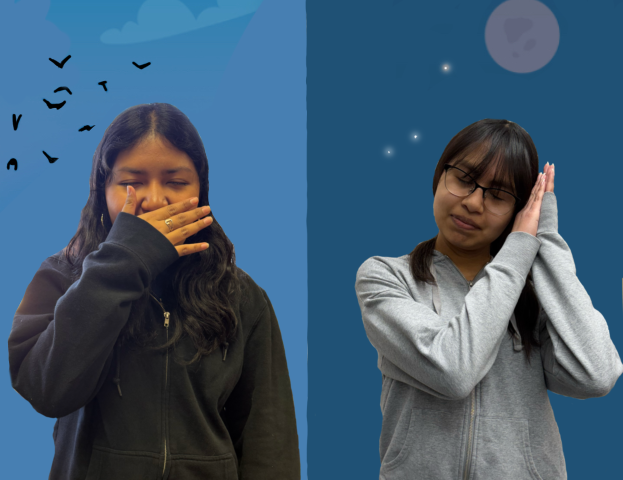Chapter 1: Reading the Letter
Purple stamps in the shapes of stars and hearts adorn sophomore Lilia Fuller’s light lavender walls as she sits in front of the camera, poised and ready to address her viewers and begin her Youtube video. However, today’s video is unlike any of the other 26 videos she has posted to her channel.
For a different approach, Fuller, daughter of 20-year PRHS Spanish teacher Jennifer Fuller, has chosen to read aloud a letter she has written to her disease, removing a layer of the invisibility that shrouds this particular illness. Fuller begins her letter with a courteous “thank you” to her Fibromyalgia for strengthening her for the battle that she assures us she will win:

“Dear Fibromyalgia, you have changed my life for better and worse. Sure, you have caused me a lot of pain and struggle, but you have made me stronger. You made some doctors give up with all the negative answers to the tests they put me through. You made them confused when I told them all my most random symptoms. I couldn’t tell you how happy I was to finally have an answer and to have it be something that wasn’t going to kill me. That is one thing that has kept me so positive. You aren’t
going to kill me.”
In the video, published on Jan. 7, 2016 and suitingly titled “A letter to my Fibromyalgia.”, Fuller goes on to describes the struggle of living with an invisible chronic pain disorder, as well as speak of both the challenges and the glimmers of hope she has discovered along the journey that has uncovered Fibromyalgia in more than one family member, a personal vision quest to choose optimism and health, and an over-the-counter trick, too.
Chapter 2: Diagnosing the Unseen
Fuller was diagnosed with Fibromyalgia on Apr. 28, 2014 and suffers from widespread pain among the body, along with other severe symptoms such as intense migraines, constant nausea, and sensory overload. An estimated 5 million Americans 18 or older are affected by Fibromyalgia, and between 80 and 90 percent of those diagnosed are women, according to the National Institute of Arthritis and Musculoskeletal and Skin Diseases.
Fibromyalgia is a disease caused by genetics and commonly triggered by any emotional or physical trauma; it is more likely to be found in adult women, which is what makes Fuller’s case a rarity. Researchers believe that patients diagnosed with Fibromyalgia experience an abnormal increase in levels of pain receptors in the brain, resulting in a much higher sensitivity to pain.
Between fighting to stay above depression and struggling with the fact that there is no cure for her disease, Fuller has had to learn to accept new expectations for her future.
Although there had been earlier indications of her disease, Fuller’s Fibromyalgia first flared up while attending a dance competition in San Jose called Showbiz in February 2014. The week of the show, she had gotten sick with the stomach flu but was feeling well enough to dance, so she decided to perform.
“I was on an adrenaline high [from the performance when] all of a sudden I felt terrible. It was one of the worst feelings ever. I felt like I was about to throw up, but my body wouldn’t let me. My whole body felt like it had been run over by a truck,” said Fuller. She had performed five different dances that weekend, including tap, lyrical, jazz, and ballet.
After the award ceremony, Fuller and her mother returned to their hotel room instead of celebrating with the rest of her studio. The family hoped things would go back to normal, but Fuller’s condition did not improve.
“I just got sick and never got better. I kept going to doctors and doctors–so many blood tests–and they just kept on coming back with negative answers,” said Fuller, who has always been more prone to getting sick than other children, her mother insists.

Before she was diagnosed, Fuller was dancing 15-20 hours a week and attending dance competitions and performances with her studio, Artistry in Motion. However, since the diagnosis, she has lost significant muscle mass that she is now working hard to earn back by gradually fitting dance back into her schedule.
Although giving up dance has been emotionally and physically tough, Fuller is choosing to see the silver lining around the situation.
“It totally changed my perspective.
Before, I couldn’t do anything, but now when I dance, I just
feel–I can’t even describe it–it’s an amazing feeling. I feel so happy.”
At first, doctors tried to pass off Fuller’s illness as a small case of anxiety that she could push through easily, and the family, believing there was a larger issue beyond what met the eye, requested a referral to Valley Children’s Hospital in Madera where they could find answers.
“[The doctors] told me I’m too young to go on any of the medications–they [haven’t been] approved for teens–so he told me to go on the internet and search whatever [I could] find,” Fuller said.
Fuller’s diagnosis evoked mixed emotions from her family members.
“I was really relieved that it wasn’t something worse like leukemia or something horrible like that, but I was also a little bit disappointed because it wasn’t something that had an easy fix. It’s been heartbreaking to watch her. When you’re a parent, you have all these hopes and dreams for your children, and you picture them going to high school, and taking honors classes, so it’s hard for me to change that perspective. Now it’s like, ‘I just want you to take classes that you enjoy and pass them,’” Jennifer Fuller said.
Chapter 3: Treating the Invisible
After browsing the internet, the Fullers came across a treatment called the Guaifenesin Protocol, which is the leading ingredient in Mucinex, and can be found in any store–much like Ibuprofen or Acetaminophen. Fuller takes the pill three times a day to filter out the phosphates in her body that her doctor believes may have a connection to her illness.
“The doctor that I see–his theory is that there is a defect in the kidney. There’s this one genetic chain that is missing, so [as a cause], the phosphates don’t filter out; they just go deposit everywhere. They go out into the bloodstream; they go everywhere. With the Guaifenesin Protocol, I felt it clear,” said Fuller, who has taken this treatment for almost two years.
With the new treatment, Fuller’s improvement was gradual but steady.
“After she was first diagnosed, she was almost bedridden. I would force her to go outside. I kept telling her every day, ‘You need to spend 20 minutes outside in the sun to get your vitamin D and just be exposed to some fresh air.’ She would go sit out on a blanket in our backyard and just sit there. Now she’s actually able to get up–she’s able to go to school,” said Jennifer Fuller.

Struggling with depression and anxiety, two major symptoms of Fibromyalgia, is something many patients like Fuller have to learn to overcome. Fuller chooses to focus on her happiness and stay optimistic throughout the tough parts of her illness.
“I’ve always been someone who looks more toward the positive side. Through all of this, I’ve just [said], ‘No, you have to stay positive.’ [I can’t] allow myself to get down. I don’t want to go into a dark place. I’ve know people that have [gone to a dark place] with this illness, and I don’t want to be that person who is sad, so I always try my best whatever it is to look on the bright side and stay happy.”
Fuller has found multiple hobbies or activities that help her stay positive and happy. One of these methods is what Fuller and her sister Hayley call their “Happy Day.”
“[My sister and I] were so tired of seeing the same walls and the same thing, so we decided to twice a month dress up to get all nice and fancy. [We] either just sit at home and watch movies or go out on a walk or go out and do something fun that we don’t usually do. We were just starting to get so depressed doing absolutely nothing and seeing absolutely no one, so we just decided, ‘Why not get up and do a happy day?’” said Fuller, who started this tradition Mar. 2, 2015, about a month after both her mom and sister had been diagnosed with less severe cases of Fibromyalgia.
Fuller makes flower crowns, jewelry, and tutus. She hopes to eventually make a website for her products to reach a larger crowd.
Chapter 4: Removing the Shroud
On Sept. 23, 2015, Fuller created a blog that documents what life is like with Fibromyalgia, delivers monthly pep talks, and serves as a safe place to discuss some of the harder aspects of her illness. Her blog can be found at mylifewithfibromyalgiasite.wordpress.com.
In one post, she promulgates “The Spoon Theory,” written by a woman named Christine Miserandino who was diagnosed with an autoimmune disease called Lupus. Miserandino developed the spoon theory while trying to explain to her college roommate what it was like to live with her illness.
“I explained that the difference in being sick and being healthy is having to make choices or to consciously think about things when the rest of the world doesn’t have to. I used spoons to convey this point,” Miserandino said in a cleverly written narrative,“But You don’t Look Sick?”. Each spoon represents the energy that patients with any chronic illness can utilize throughout the day.
For this reason, Fuller chooses to wear a necklace with a spoon charm around her neck.

“I try to do
little things like that, that slowly help bring awareness to Fibromyalgia and that kids get it too,” said Fuller, who also wears purple laces on her shoes, the color that represents Fibromyalgia awareness.
Fuller also has her own Youtube channel where she posts videos about her sickness and how it affects her day-to-day life. Her many videos include clips of Fuller speaking about her disease, video logs of her dance shows and her “Happy Days” with her sister, and monthly words of encouragement. One of her major role models is a fellow Youtuber, Emma Taylor, who has become a kind of spokesperson for teens with Fibromyalgia.
“I’ve never met [Taylor], but she kind of inspired me to start writing and trying to get my story out there, and a lot of people have written back to me. It’s been really interesting,” said Fuller, who has been trying to get the word out about Fibromyalgia and inform the public about methods that have helped her, such as the Guaifenesin Protocol.
Both Fuller and her family have had to adjust their perspectives in order to live with Fibromyalgia, but their strength in the face of adversity has been rewarded with great healing and improvement.
In the Letter Video, Fuller closes off her communique to her Fibromyalgia with victorious, powerful words:
“You will never be able to knock me down for good. I will always be here fighting. I am never going to let you win this battle we are having. I will keep on fighting no matter what. You have made me a fighter who will never, ever give up. You will never win, Fibromyalgia; I will never let you.”


















